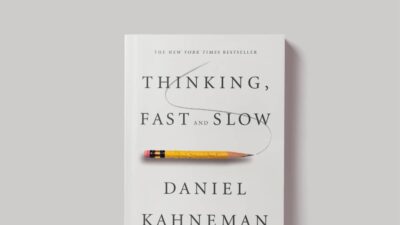Introduction
In “The 4-Hour Workweek,” Tim Ferriss challenges traditional notions of work, success, and lifestyle design. This revolutionary book presents a framework for escaping the conventional 9-5 grind and creating a life of freedom, adventure, and purpose. Let’s dive deep into the core concepts and practical strategies that make this book so impactful.
A New Way of Thinking
Tim Ferriss begins by introducing the concept of the “New Rich” (NR) – people who abandon the traditional deferred-life plan and create luxury lifestyles in the present using time and mobility. The New Rich focus on relative income (per-hour income) rather than absolute income, and they emphasize effectiveness over efficiency. This fundamental shift in thinking sets the stage for the entire book’s philosophy.
⚡ DEAL: The Four Steps to Freedom
Ferriss organizes his methodology into four main sections, forming the acronym DEAL:
- Definition: Turning common assumptions upside down
- Elimination: Removing the inefficient use of time
- Automation: Putting cash flow on autopilot
- Liberation: Creating freedom of location
Let’s explore each section in detail.
Rule 1. Definition: Challenging Assumptions
The first step involves redefining your goals and expectations. Ferriss argues that the traditional path of working hard for 40+ years to retire isn’t the only option. He introduces several key concepts:
1. Fear-Setting vs. Goal-Setting
Instead of just setting goals, Ferriss advocates for “fear-setting” – defining your worst-case scenarios and realizing they’re often not as catastrophic as imagined. This process helps overcome the paralysis that prevents many from taking action. He encourages readers to ask themselves: “What’s the worst that could happen?” and “What would it take to repair the damage?”
2. Relative vs. Absolute Income
A crucial distinction is made between absolute income (total earnings) and relative income (earnings per hour of work). Ferriss emphasizes that making $75,000 working 10 hours a week is better than making $200,000 working 80 hours a week. This shift in perspective helps readers focus on maximizing their per-hour value rather than just total earnings.

3. The Currency of the New Rich: Time and Mobility
Money is just one piece of the puzzle. The New Rich prioritize having control over their time and the ability to work from anywhere. This freedom allows for mini-retirements throughout life instead of one final retirement at the end.
Rule 2. Elimination: The Art of Time Management

The second phase focuses on dramatically increasing your productivity by eliminating unnecessary tasks and distractions. Ferriss introduces several groundbreaking concepts:
1. Pareto’s Law (80/20 Principle)
Ferriss applies the 80/20 principle to everything: 80% of your results come from 20% of your efforts. He encourages readers to identify their most productive 20% and focus on scaling those activities while eliminating or delegating the rest.
2. Parkinson’s Law
Work expands to fill the time available for its completion. By setting aggressive deadlines and limiting available time, you force yourself to focus on what’s truly important and find more efficient solutions.
3. Low-Information Diet
Information overload is a major productivity killer. Ferriss advocates for selective ignorance – consciously choosing what information to consume and what to ignore. This means:
- Checking email only at specific times
- Avoiding news that doesn’t require action
- Focusing on information that serves immediate goals
4. The Art of Saying “No”
Learning to say no to meetings, requests, and commitments that don’t serve your goals is crucial. Ferriss provides scripts and strategies for declining requests politely but firmly.
Rule 3. Automation: Building a Self-Sustaining Income
This step involves creating systems that generate income with minimal ongoing effort. This section provides detailed guidance on:

1. Creating Automated Income Streams
Ferriss introduces the concept of “muses” – small businesses designed for automation. The ideal muse has:
- Low startup costs
- High profit margins
- Minimal ongoing management requirements
- The potential for automation
He walks readers through the process of:
- Selecting a niche market
- Testing product ideas
- Creating or sourcing products
- Setting up automated marketing systems
- Establishing efficient fulfillment processes
2. Outsourcing Life and Business
A significant portion of this section focuses on effectively using virtual assistants and outsourcing to free up your time. Ferriss provides detailed instructions for:
- Finding and testing virtual assistants
- Creating clear systems and processes
- Managing remote workers effectively
- Gradually removing yourself from daily operations
3. Systems Thinking
The key to automation is creating robust systems that can run without your constant involvement. This includes:
- Documented processes and procedures
- Automated customer service systems
- Streamlined payment and fulfillment
- Clear metrics for monitoring performance
Rule 4. Liberation: Breaking Free from Location
The final phase focuses on gaining geographic freedom and designing your ideal lifestyle. This section covers:
1. Remote Work Strategies
Ferriss provides detailed scripts and strategies for convincing your employer to let you work remotely, including:
- Starting with small test periods
- Demonstrating increased productivity
- Addressing common concerns and objections
- Gradually extending remote work privileges

2. Geographic Arbitrage
Taking advantage of currency differences and cost-of-living variations to live luxuriously on less. This includes:
- Selecting ideal locations for mini-retirements
- Managing finances across borders
- Finding opportunities in different markets
- Maintaining productivity while traveling
3. Lifestyle Design in Practice
Practical advice for implementing your ideal lifestyle:
- Planning and executing mini-retirements
- Maintaining relationships while mobile
- Creating structure in an unstructured life
- Continuing personal growth and learning
⚡ Key Practical Lessons and Implementation Strategies
1. Time Management Revolution
- Use time constraints to force efficiency
- Batch similar tasks together
- Create “not-to-do” lists
- Set specific times for email and communications
- Use autoresponders and filters effectively
2. Business Development Framework
- Test markets before full commitment
- Start small and scale what works
- Focus on automated marketing systems
- Create multiple income streams
- Build systems that can run without you

Lifestyle Design Principles
- Question traditional assumptions
- Focus on effectiveness over efficiency
- Leverage technology and global resources
- Design around your ideal day
- Maintain work-life separation
⚡ Common Challenges and Solutions

1. Overcoming Analysis Paralysis
Many readers get stuck in the planning phase. Ferriss recommends:
- Starting with small experiments
- Setting concrete deadlines
- Using fear-setting to overcome hesitation
- Taking imperfect action rather than waiting for perfect conditions
2. Dealing with Resistance
Whether from family, friends, or employers, resistance to lifestyle changes is common. Solutions include:
- Starting gradually
- Demonstrating results before announcing changes
- Finding supportive communities
- Having clear answers to common objections
3. Maintaining Motivation
The transition to a 4-hour workweek requires consistent effort. Strategies include:
- Setting clear milestones
- Tracking progress
- Celebrating small wins
- Staying connected with like-minded individuals
⚡ Conclusion: Beyond the 4-Hour Workweek
The book’s title is intentionally provocative, but its true message goes beyond working just four hours. It’s about:
- Taking control of your time and life
- Creating sustainable systems for wealth and freedom
- Living life on your own terms
- Finding purpose beyond traditional work
The principles in “The 4-Hour Workweek” can be applied selectively based on your goals and circumstances. Not everyone needs or wants to work only four hours, but everyone can benefit from:
- Increased efficiency and effectiveness
- Better time management
- More automated systems
- Greater location independence
- Improved work-life balance
The book serves as a blueprint for redesigning your life around what truly matters to you, whether that’s travel, family time, personal projects, or simply having more control over your schedule and location.
Final Thoughts
“The 4-Hour Workweek” is more than just a productivity manual or business book – it’s a comprehensive guide to lifestyle design. While some of its specific tactics may need updating for the current digital age, its core principles remain highly relevant:
- Question conventional wisdom
- Focus on effectiveness over efficiency
- Leverage technology and globalization
- Design your ideal lifestyle first, then build systems to support it
- Take calculated risks and learn from experiments
The book’s lasting impact lies not in its specific prescriptions but in its invitation to think differently about work, time, and life itself. It challenges readers to imagine and create a life that combines financial success with personal freedom and fulfillment.



